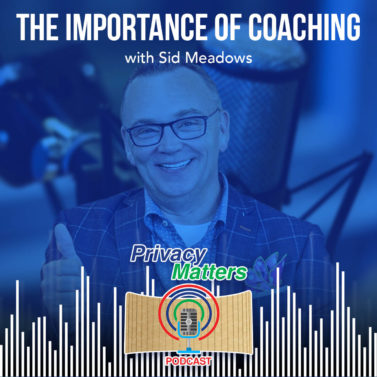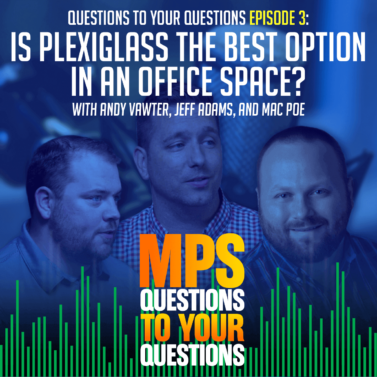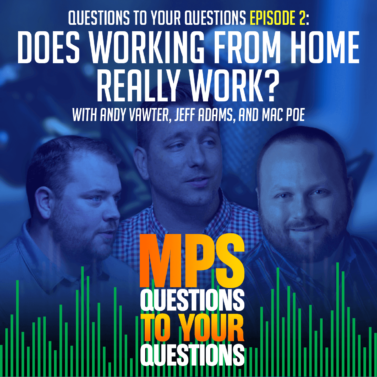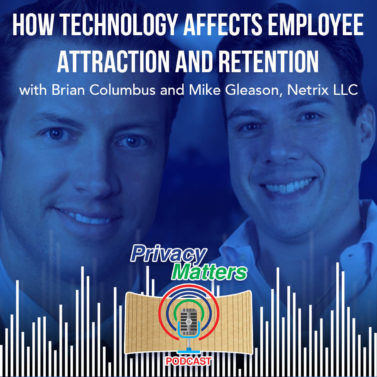Questions to Your Questions Episode 3: Is Plexiglass the Best Option in an Office Space?
Andy Vawter, Jeff Adams, and Mac Poe continue the discussion in our latest podcast series, “Questions to Your Questions.”
In this episode, they tackle the question of whether Plexiglas dividers are the best solution for office spaces trying to get their teams back post-COVID-19.
Andy Vawter [00:18]:
Alright, the third question is one that we get a lot. If you go to Lowe’s Home Depot, you go to your local home improvement store, Walmart or any grocery store. You’re seeing this big piece of plexiglass between you and the teller to protect them and to protect you. The question is, “Is plexiglass the best option in an office space?”. We know that a lot of people are spending money on it. A lot of people are asking and the dealers that we work with ask if we have any Plexi dividers as they need to put them in space. We don’t do that. That’s not acoustic. That’s the opposite of acoustic. It’s very reverberant. So we chose as a company to not really delve into that cause it didn’t fit our core message. But it isn’t really the best option. I don’t know that we have the answer to that. Of course, everyone’s going to say we’re biased.
Mac Poe [01:14]:
Everybody’s a little different. The big thing that I see where it is a good option is when you need that visibility. So if you’re at a store and you need to be able to do business with somebody, you need to be able to carry out a transaction. It’s important that you could see them. I don’t know if this is going to be a little bit stepping on toes or anything. If you’re the type of manager that wants to micromanage your employees and really be able to see what they’re doing. I would say that it’s probably the best option if you need to be able to see something physically.
Andy Vawter [01:56]:
But most of those people have been working from home and literally had Netflix at the same time. I hadn’t really even thought about that when we worked together. That’s the first time you’ve articulated that to me.
Jeff Adams [02:17]:
That’s why I like to close the blinds at my office.
Mac Poe [02:21]:
That’s a message. I think we’re subliminal.
Andy Vawter [02:24]:
That makes a lot of sense. Most office spaces while workers do collaborate with each other, the job that they’re doing in front of their screen is not shared work with somebody else. It’s focused on work.
Jeff Adams [02:35]:
Sometimes the visual distraction could be very distracting when you are seeing movement. You’re looking at the person across from you all day long. That’s always been one of the challenges, especially in your ultra open office type settings.
Mac Poe [02:52]:
It’s education too. It’s Saturday and I have to run errands so I’m going to the drive-through, or the home improvement store or the bank and all these things. What am I seeing constantly? Seeing that sheet of plastic in front of me. Well, education. People end up seeing that all weekend, all week, and then they get to the office and they know they have to create physical barriers. They think this is the safest thing to do. There’s also a stigma, especially when this first happened. “Okay guys, any fabric you have in your entire workspace needs to be ripped out. You need a hard wipeable surface.” Specifically, what we do with our acoustical panels, a lot of people can see that and say fabric. Bad. That’s bad fabric.
Andy Vawter [03:40]:
Talking to the customers I work with on a daily basis. A lot of that is just asking them questions. To Jeff’s point, sometimes there is a need for just clear plastic. I need to be able to see out, I’m able to see in, and that’s just what it is. And I’m not really too worried about acoustics and that’s fine. Everyone’s gonna have a varying need for what a physical barrier is in their office. But asking those questions is this something where they just need something that’s easily able to be sanitized and a physical barrier and maybe even add some acoustic value as you start to bring people back to work. That’s where our product PT starts to stand out.
Jeff Adams [04:15]:
That was a good point. One thing that I often talk to dealers about when we’re looking into solutions. What is the best option? Is it really plexiglass or some kind of a hard surface? And what people aren’t necessarily thinking about is when you look at the CDC guidelines of how to clean a surface. You look at the guidelines for back to the office, I think is actually how they put it or for office cleaning. There is a dwell time associated with your cleaning solution, which really means how long do you keep a surface wet with the cleaning solution before you wipe it down or leave it on the surface? I still go to the gym. I’ve got my mask in my pocket. Some people may say it’s too risky, but I’m there. Anyways, the cleanest solution that they have, I turned it around, took a picture of it. It says to keep the surface wet for 10 minutes. Could you imagine spraying that you’ve got a plexiglass screen on the back of your desk and you have to spray that and keep it wet for 10 minutes? My goodness, it seems like you’d have a mess on your hands. You’ve got electronics back there. You’ve got cords and you spray it down. I just don’t know logistically how that’s possible.
Andy Vawter [05:35]:
It makes a lot of sense in a space like a home improvement store or a grocery store or something where they’re interacting. And it’s not really something you’re going to stare at every day either. You have traffic going through when you talk about office space. We’re all working here every day, and this is my space. I’m surrounded by three sides of a glass partition and that’s having been sprayed with long dwell times, which means it’s going to get everything wet and then you wipe it down.
Jeff Adams [06:03]:
If you look at the screen of the store, it’s going to show fingerprints and other smudges.
Andy Vawter [06:11]:
The shameless plug for our material was one of our reps, Ethan of Austin, give him a shout out. He made a little video. It was awesome. He bleached out the color ball because a lot of people think our stuff is fabric.
Jeff Adams [06:27]:
They think bleach is going to change the world.
Andy Vawter [06:29]:
If it gets bleach on it, it’s going to look like a tie-dye shirt. So he took all the color samples and doused them and put them in a bucket of bleach for like two weeks and filmed the whole process. Everything was pretty creative and funny, but a great kind of over the top way.
Jeff Adams [06:43]:
He put a sock in it and it immediately changed brown.
Andy Vawter [06:48]:
It just over the top way, showed that you don’t have to worry about bleaching this stuff. From the standpoint of office space, you can handle acoustics. You can make it easier to get dwell time. The full dwell time happening on the material but the challenge is there are applications. What I love about you guys honestly, is we don’t go into opportunities and say like, “you got to go with us.” You guys are looking and saying if you need to be able to see each other. We have visual privacy, which will not be the same. So that’s not going to be the best solution for you. We are in the business of educating people.
Jeff Adams [07:28]:
As Mac alluded to a lot of people aren’t thinking through or thinking about how our product could be cleaned and are very surprised to learn that you can just spray it down with bleach Lysol or any other cleaner, get it good and wet, let it sit for 10 minutes and then it will air dry. So you never even have to go back and wipe it. It’s not going to run. It’s not going to drip. Once we have those conversations with people typically they’re impressed and they’re ready to get started on building something for their office.
Andy Vawter [08:01]:
We had somebody where we had to ship them a bunch of samples.
Mac Poe [08:07]:
It was a dealer out of Tennessee. That dealer not only sells furniture and all the things that go with that, but they do sanitation as well. They’re actually doing sanitation right now. They’re doing pretty good. But they have a host of cleaners and their biggest concern was we really want to get into this and offer it as a barrier for our clients. I don’t want to sanitize it after we install it and discolored it. One of the biggest things they told me in that process is using plexiglass versus anything else. If you spend a lot of money building a specific aesthetic, right. We’ve all walked some beautiful spaces whether it’s planted on a wall or just all the lengths that they’ll go to to make sure people are excited to come to work. Going to work and feeling like you’re talking to a family member from prison, looking through that plexiglass. In some scenarios, it makes sense to do plexiglass, but it can just really harm the aesthetic that somebody just spent five years building for their space.
Jeff Adams [09:20]:
I’ve had some clients that mentioned they have plans for repurposing. Maybe they do want to eventually remove our acoustic panels from the desk. But they’re asking, how can we repurpose this? Could we use it in some other form? Can we put it on the wall or hang it in a different area? Definitely that’s another thing.
Andy Vawter [09:41]:
We’re not saying that our stuff has the best option and everything else is not. I guess what you are saying is the question to the question. Is Plexi good in some cases, but in other options is not? The thing that we’ve got to do is educate people about those other options cause that’s what most people are missing. They don’t know anything about any other options other than what they see 100% of the time when they’re out. Excellent. Alright.































